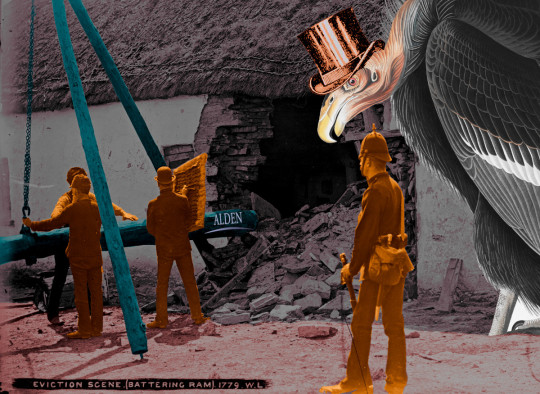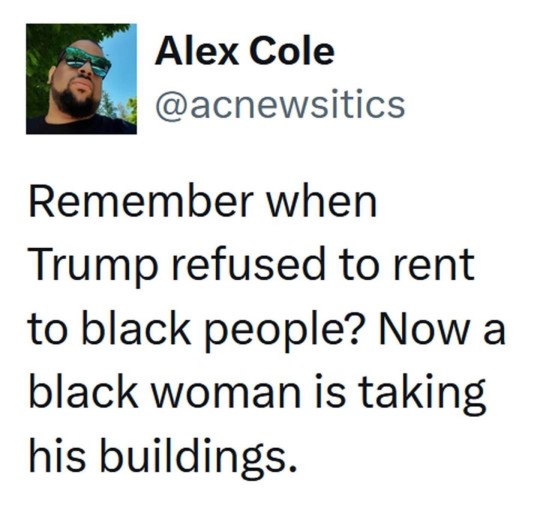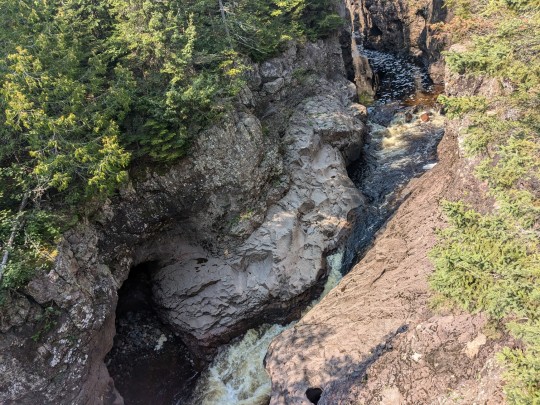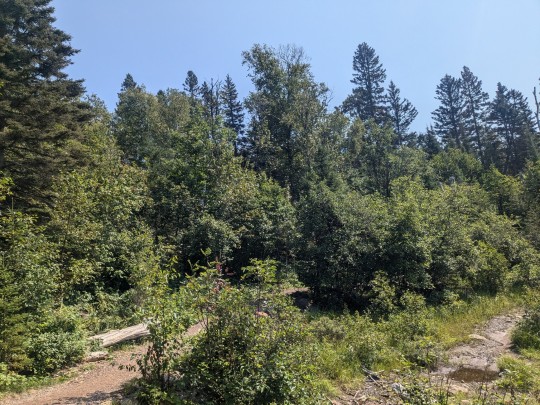#Cook County
Explore tagged Tumblr posts
Text
The tax sharks are back and they’re coming for your home

I'm touring my new, nationally bestselling novel The Bezzle! Catch me TODAY (Apr 27) in MARIN COUNTY, then Winnipeg (May 2), Calgary (May 3), Vancouver (May 4), and beyond!

One of my weirder and more rewarding hobbies is collecting definitions of "conservativism," and one of the jewels of that collection comes from Corey Robin's must-read book The Reactionary Mind:
https://en.wikipedia.org/wiki/The_Reactionary_Mind
Robin's definition of conservativism has enormous explanatory power and I'm always finding fresh ways in which it clarifies my understand of events in the world: a conservative is someone who believes that a minority of people were born to rule, and that everyone else was born to follow their rules, and that the world is in harmony when the born rulers are in charge.
This definition unifies the otherwise very odd grab-bag of ideologies that we identify with conservativism: a Christian Dominionist believes in the rule of Christians over others; a "men's rights advocate" thinks men should rule over women; a US imperialist thinks America should rule over the world; a white nationalist thinks white people should rule over racialized people; a libertarian believes in bosses dominating workers and a Hindu nationalist believes in Hindu domination over Muslims.
These people all disagree about who should be in charge, but they all agree that some people are ordained to rule, and that any "artificial" attempt to overturn the "natural" order throws society into chaos. This is the entire basis of the panic over DEI, and the brainless reflex to blame the Francis Scott Key bridge disaster on the possibility that someone had been unjustly promoted to ship's captain due to their membership in a disfavored racial group or gender.
This definition is also useful because it cleanly cleaves progressives from conservatives. If conservatives think there's a natural order in which the few dominate the many, progressivism is a belief in pluralism and inclusion, the idea that disparate perspectives and experiences all have something to contribute to society. Progressives see a world in which only a small number of people rise to public life, rarified professions, and cultural prominence and assume that this is terrible waste of the talents and contributions of people whose accidents of birth keep them from participating in the same way.
This is why progressives are committed to class mobility, broad access to education, and active programs to bring traditionally underrepresented groups into arenas that once excluded them. The "some are born to rule, and most to be ruled over" conservative credo rejects this as not just wrong, but dangerous, the kind of thing that leads to bridges being demolished by cargo ships.
The progressive reforms from the New Deal until the Reagan revolution were a series of efforts to broaden participation in every part of society by successively broader groups of people. A movement that started with inclusive housing and education for white men and votes for white women grew to encompass universal suffrage, racial struggles for equality, workplace protections for a widening group of people, rights for people with disabilities, truth and reconciliation with indigenous people and so on.
The conservative project of the past 40 years has been to reverse this: to return the great majority of us to the status of desperate, forelock-tugging plebs who know our places. Hence the return of child labor, the tradwife movement, and of course the attacks on labor unions and voting rights:
https://pluralistic.net/2022/11/06/the-end-of-the-road-to-serfdom/
Arguably the most potent symbol of this struggle is the fight over homes. The New Deal offered (some) working people a twofold path to prosperity: subsidized home-ownership and strong labor protections. This insulated (mostly white) workers from the two most potent threats to working peoples' lives and wellbeing: the cruel boss and the greedy landlord.
But the neoliberal era dispensed with labor rights, leaving the descendants of those lucky workers with just one tool for securing their American dream: home-ownership. As wages stagnated, your home – so essential to your ability to simply live – became your most important asset first, and a home second. So long as property values rose – and property taxes didn't – your home could be the backstop for debt-fueled consumption that filled the gap left by stagnating wages. Liquidating your family home might someday provide for your retirement, your kids' college loans and your emergency medical bills.
For conservatives who want to restore Gilded Age class rule, this was a very canny move. It pitted lucky workers with homes against their unlucky brethren – the more housing supply there was, the less your house was worth. The more protections tenants had, the less your house was worth. The more equitably municipal services (like schools) were distributed, the less your house was worth:
https://pluralistic.net/2021/06/06/the-rents-too-damned-high/
And now that the long game is over, they're coming for your house. It started with the foreclosure epidemic after the 2008 financial crisis, first under GW Bush, but then in earnest under Obama, who accepted the advice of his Treasury Secretary Timothy Geithner, who insisted that homeowners should be liquidated to "foam the runways" for the crashing banks:
https://pluralistic.net/2023/03/06/personnel-are-policy/#janice-eberly
Then there are scams like "We Buy Ugly Houses," a nationwide mass-fraud outfit that steals houses out from under elderly, vulnerable and desperate people:
https://pluralistic.net/2023/05/11/ugly-houses-ugly-truth/#homevestor
The more we lose our houses, the more single-family homes Wall Street gets to snap up and convert into slum properties, aslosh with a toxic stew of black mold, junk fees and eviction threats:
https://pluralistic.net/2022/02/08/wall-street-landlords/#the-new-slumlords
Now there's a new way for finance barons the steal our houses out from under us – or rather, a very old way that had lain dormant since the last time child labor was legal – "tax lien investing."
Across the country, counties and cities have programs that allow investment funds to buy up overdue tax-bills from homeowners in financial hardship. These "investors" are entitled to be paid the missing property taxes, and if the homeowner can't afford to make that payment, the "investor" gets to kick them out of their homes and take possession of them, for a tiny fraction of their value.
As Andrew Kahrl writes for The American Prospect, tax lien investing was common in the 19th century, until the fundamental ugliness of the business made it unattractive even to the robber barons of the day:
https://prospect.org/economy/2024-04-26-investing-in-distress-tax-liens/
The "tax sharks" of Chicago and New York were deemed "too merciless" by their peers. One exec who got out of the business compared it to "picking pennies off a dead man’s eyes." The very idea of outsourcing municipal tax collection to merciless debt-hounds fell aroused public ire.
Today – as the conservative project to restore the "natural" order of the ruled and the ruled-over builds momentum – tax lien investing is attracting some of America's most rapacious investors – and they're making a killing. In Chicago, Alden Capital just spent a measly $1.75m to acquire the tax liens on 600 family homes in Cook County. They now get to charge escalating fees and penalties and usurious interest to those unlucky homeowners. Any homeowner that can't pay loses their home.
The first targets for tax-lien investing are the people who were the last people to benefit from the New Deal and its successors: Black and Latino families, elderly and disabled people and others who got the smallest share of America's experiment in shared prosperity are the first to lose the small slice of the American dream that they were grudgingly given.
This is the very definition of "structural racism." Redlining meant that families of color were shut out of the federal loan guarantees that benefited white workers. Rather than building intergenerational wealth, these families were forced to rent (building some other family's intergenerational wealth), and had a harder time saving for downpayments. That meant that they went into homeownership with "nontraditional" or "nonconforming" mortgages with higher interest rates and penalties, which made them more vulnerable to economic volatility, and thus more likely to fall behind on their taxes. Now that they're delinquent on their property taxes, they're in hock to a private equity fund that's charging them even more to live in their family home, and the second they fail to pay, they'll be evicted, rendered homeless and dispossessed of all the equity they built in their (former) home.
It's very on-brand for Alden Capital to be destroying the lives of Chicagoans. Alden is most notorious for buying up and destroying America's most beloved newspapers. It was Alden who bought up the Chicago Tribune, gutted its workforce, sold off its iconic downtown tower, and moved its few remaining reporters to an outer suburban, windowless brick building "the size of a Chipotle":
https://pluralistic.net/2021/10/16/sociopathic-monsters/#all-the-news-thats-fit-to-print
Before the ghastly hotel baroness Leona Helmsley went to prison for tax evasion, she famously said, "We don't pay taxes; only the little people pay taxes." Helmsley wasn't wrong – she was just a little ahead of schedule. As Propublica's IRS Files taught us, America's 400 richest people pay less tax than you do:
https://pluralistic.net/2022/04/13/for-the-little-people/#leona-helmsley-2022
When billionaires don't pay their taxes, they get to buy sports franchises. When poor people don't pay their taxes, billionaires get to steal their houses after paying the local government an insultingly small amount of money.
It's all going according to plan. We weren't meant to have houses, or job security, or retirement funds. We weren't meant to go to university, or even high school, and our kids were always supposed to be in harness at a local meat-packer or fast food kitchen, not wasting time with their high school chess club or sports team. They don't need high school: that's for the people who were born to rule. They – we – were meant to be ruled over.

If you'd like an essay-formatted version of this post to read or share, here's a link to it on pluralistic.net, my surveillance-free, ad-free, tracker-free blog:
https://pluralistic.net/2024/04/26/taxes-are-for-the-little-people/#alden-capital
#pluralistic#chicago#illinois#alden capital#the rents too damned high#debt#immiseration#chicago tribune#private equity#vulture capital#cook county#liens#tax evasion#taxes are for the little people#tax lien certificates#tax sharks#race#racial capitalism#predatory lending
382 notes
·
View notes
Text
Thornton Township is one of 29 townships in Cook County, Illinois, Chicago area. 🤔
#pay attention#educate yourselves#educate yourself#reeducate yourselves#knowledge is power#reeducate yourself#think about it#think for yourselves#think for yourself#do your homework#do your own research#do some research#do research#ask yourself questions#question everything#chicago#thornton township#cook county#freedom fighters
82 notes
·
View notes
Text


#new york attorney general#judgments#westchester county#donald trump#golf course#private estate#seven springs#state lawyers#judge arthur engoron#trump organization#billionaire#legal bills#third run for the white house#creditor#property recovery#liens#foreclosure#trump tower#40 wall street#central park#mar-a-lago#trump national doral golf club#cook county#illinois#truth social#appeals court#bonding companies#lmao#humor#funniness
345 notes
·
View notes
Text


[photo id: a male cardinal on a fallen tree branch in a yard of grass, in front of a chain-link fence. there is a patch of dandelions at the base of the fence, and a tree on the other side of the fence.]
Photo by: Blyth Wallace
35 notes
·
View notes
Text
Toledo City Council just approved a plan to turn $1.6 million in public dollars into as much as $240 million in economic stimulus, targeted at some of the Ohio metro’s most vulnerable residents.
“It’s really going to help people put food on the table, help them pay their rent, help them pay their utilities,” says Toledo City Council Member Michele Grim, who led the way for the measure. “Hopefully we can prevent some evictions.”
The strategy couldn’t be simpler: It works by canceling millions in medical debt.
Working with the New York City-based nonprofit RIP Medical Debt, the City of Toledo and the surrounding Lucas County are chipping in $800,000 each out of their federal COVID-19 recovery funds from the American Rescue Plan Act.
The combined $1.6 million in funding is enough for RIP Medical Debt to acquire and cancel up to $240 million in medical debt owed by Lucas County households that earn up to 400% of the federal poverty line.
“It could be more than a one-to-100 return on investment of government dollars,” Grim says. “I really can’t think of a more simple program for economic recovery or a better way of using American Rescue Plan dollars, because it’s supposed to rescue Americans.”
How It Works
Under the RIP Medical Debt model, there is no application process to cancel medical debt. The nonprofit negotiates directly with local hospitals or hospital systems one-by-one, purchasing portfolios of debt owed by eligible households and canceling the entire portfolio en masse.
“One day someone will get a letter saying your debt’s been canceled,” Grim says. It’s a simple strategy for economic welfare and recovery.
RIP Medical Debt was founded in 2014 by a pair of former debt collection agents, and since inception it has acquired and canceled more than $7.3 billion in medical debt owed by 4.2 million households — an average of $1,737 per household...
Local Governments Get Involved
The partnership with Toledo and Lucas County is the third instance of the public sector funding RIP Medical Debt to cancel debt portfolios.
Earlier this year, in the largest such example yet, the Cook County Board of Commissioners approved a plan to provide $12 million in ARPA funds for RIP Medical Debt to purchase and cancel an estimated $1 billion in medical debt held by hospitals across Cook County, which includes Chicago.
“Governments contract with nonprofits all the time for various social interventions,” Sesso says.
“This isn’t really that far-fetched or different from that. I would say between five and 10 other local governments have reached out just since the Toledo story came out.”
What's the Deal with Medical Debt?
An estimated one in five households across the U.S. have some amount of medical debt, and they are disproportionately Black and Latino, according to the U.S. Census Bureau...
Acquiring medical debt is relatively cheap: hospitals that sell medical debt portfolios do so for just pennies on the dollar, usually to investors on the secondary market.
The purchase price is so low because hospitals and debt buyers alike know that medical debt is the hardest form to collect...
The amount of debt canceled for any given household has ranged from $25 all the way up to six-figure amounts. Under IRS regulations, debts canceled under RIP Medical Debt’s model do not count as taxable income for households...
Massive Expansion Coming Up
After not one but two donations from philanthropist MacKenzie Scott, totaling $80 million, RIP Medical Debt is planning for expansion.
It’s using a portion of those dollars to create an internal revolving line of credit to expand to places where it can find willing sellers before it has found willing funders.
The internal line of credit means the nonprofit now has new, albeit still limited, flexibility to acquire debt portfolios from hospitals first, then begin raising private or public dollars locally to replenish the line of credit later and make those funds available for other locations.
“People often ask, do you only work with nonprofit hospitals, or do you work with for-profit hospitals? And I’m like, I just want to get the debt, regardless of who created the debt. If it’s out there, I want it,” Sesso says.
Fundamentally, they are not solving the issue of medical debt, but easing its pressure from as many lives as possible — while also upping the pressure on lawmakers and the healthcare industry.
“We’re intentionally taking the stories of the individuals whose debt we have resolved, and putting their stories out into the world with intention in a way that tries to push and create more of that pressure to fundamentally solve the problem,” she says.
-via GoodGoodGood, 4/6/23
#toledo#ohio#chicago#cook county#new york#medical debt#healthcare#healthcare access#united states#us politics#debt crisis#debt relief#hospital#nonprofit#good news#hope
303 notes
·
View notes
Text

An Israeli-American attorney is suing her supervisors at the Chicago Public Defender’s Office after being asked to remove a photo of herself holding an IDF-issued rifle against the backdrop of an Israeli flag claiming it is “akin to displaying a Nazi swastika”.
Attorney Debra Gassman, assistant public defender of Cook County, said that the photo had been taken during her volunteer service in the IDF during the first Gulf War.
Define N@zism for them! AM YISRAEL CHAI ✡️✡️✡️
naz_hashem
49 notes
·
View notes
Text

#wood duck#duck#diversey harbor#lincoln park#chicago#cook county#illinois#IL#american midwest#US#birds#'24#close encounters of the bird kind#birblr#birding
8 notes
·
View notes
Text
I recently went to Temperance River State Park in Minnesota for a camping trip and figured I'd share some photos and cool facts with Tumblr about it.



The river itself! The surrounding cliff sides are a fantastic example of the eroding power of flowing water over rock when given a long enough time to work. The water would pool into "bowls" in the rock that developed as water formed pools that would develop a whirl whose force and movement would erode the bowl making it larger. Once they eroded enough the river would continue down the cliff. You could see these bowls all through the river and in the above pictures!


The water was fairly murky and had a mild sheen as well as formed bubbles throughout. This is because this far north the water flowing south into Lake Superior (which Temperance does) will have water flowing into it from bogs. About 20 miles (32.2 km) is the Cascade River and its state park named after itself which also flows with the same coloration and foam and drawing from some of the same bog lands. Minnesota's north eastern third is a coniferous forest biome and the decay of pine needles and other plants that grow in the region lower the pH in the wetlands of the region around them, which is how the bogs develop. Scotland's peet bogs are developed in the same way.


These conifers have adapted to grow into the rock faces of the area as well. The rocky region is partially due to a volcanic history in the region meeting ice age glaciers. Glaciers that largely made Minnesota as ecologically and geologically fascinating as it is. The melting of the glaciers here started the process by which this, and many over rivers and lakes here formed. As they melted the flowing water formed the divots in the ground that the future rivers would later carve their paths deeper into. You can still see those layers in the rocks in the above image.

I saved my most gorgeous image for last. A lot of this information came from local signage but also from my long history of learning about the ecological minutiae of my home through interest and study. I know not everyone can make it to places like these so I hope this slice of my adventure could bring you even a sliver of the joy it brought me a marvel at it in the context of my love for nature.
#nature#state park#minnesota#Minnesota state park#temperance state park#ecology#nature photography#camping#nature education#ecology education#nature facts#ecology facts#minnesota facts#cook county#temprance river#bog facts#bogs#rivers#river facts#if this post gets like 100 notes ill post more nature stuff but thatll never happen.#great lakes#North shore#lake superior
11 notes
·
View notes
Text
On August 3, 1919, several days of racial violence targeting Black communities in Chicago, Illinois, came to an end after intervention by the National Guard. After five days of gunfire, beatings, and burnings, 23 African Americans and 15 white people had been killed, 537 people injured, and 1,000 African American families left homeless.
During the Great Migration, Chicago was a popular destination for many Black people leaving the South in search of economic opportunity and a refuge from racial terror lynching. From 1910 to 1920, the city’s Black population swelled from 44,000 to 109,000 people. The new arrivals joined thousands of white immigrants also relocating to Chicago in search of work. Many Black newcomers settled on Chicago's South Side, in neighborhoods adjacent to communities of European immigrants, close to plentiful industrial jobs.
Although African American people had fled the Southern brand of racial violence, once in Chicago they still faced racial animosity and discrimination that created challenging living conditions like overcrowded housing, inequality at work, police brutality, and segregation by custom rather than law.
In the second decade of the 20th century, segregation in Chicago was not as legally regulated as in Southern cities, but unwritten rules restricted Black people from many neighborhoods, workplaces, and "public" areas—including beaches. On July 27, 1919, a Black youth named Eugene Williams drowned at a Chicago beach after a white man struck him with a rock for drifting to the “white” side of Lake Michigan. When police refused to arrest the man who had thrown the rock, Black witnesses protested; white mobs responded with widespread violence that lasted five days.
Over that terrifying period, white mobs attacked Black people on sight, set fire to more than 30 properties on Chicago’s South Side, and even attempted to attack Provident Hospital—which served mostly Black patients. Six thousand National Guard troops were called in to quell the unrest, and many Black people left Chicago after the terrifying experience.
Though state officials announced a plan to investigate and punish all parties responsible for violence and destruction of property during the unrest, many more Black people were arrested than white. The subsequent grand jury proceedings resulted in the indictment of primarily Black defendants. Later testifying before a commission investigating the roots of the Chicago violence, the Cook County district attorney admitted this was due to bias in his department of white officers.
"There is no doubt that a great many police officers were grossly unfair in making arrests," he said in 1922. "They shut their eyes to offenses committed by white men while they were very vigorous in getting all the colored men they could get."

#history#white history#us history#am yisrael chai#jumblr#black history#israel#democrats#republicans#palestine#Chicago#Illinois#Eugene Williams#National Guard#racial terror lynching#racial terror#white supremacy#defund the police#bad police#police officer#police brutality#police#law enforcement#cops#all cops are bastards#dirty cops#bad cops#cop#Cook County
5 notes
·
View notes
Text
Kwanzaa Principle #7 Imani (Faith)
June 27, 2024
Sonic Bodies - Chicago Black Listening Event
[& THE Sterling Plump was like 6 feet away from me to my right blk!]
3 notes
·
View notes
Text
#opinion#commentary#evildoers#refugees#refugee children#migrant criminals#cook county#illinois#chicago
3 notes
·
View notes
Text
Crime & Christie: Arsenic the Element That Brings Everyone Together
Now, you’d think arsenic poisoning wouldn’t really square with Chicago’s Murderess Acquittal Formula. Not only because the administration of poison is (predominantly) a covert and (on the whole) premeditated act but on account of the sheer absurdity of translating the foundation of this Formula from “they both reached for the gun” — to — “they both reached for the box of Rough on Rats.” And…

View On WordPress
#agatha Christie#arsenic#arsenic poisoning#chicago#Chicago the musical#cook county#frieda graunke#John Otto lindloff#Julius graunke#Louisa lindloff#Louise Lindloff#louise vermilya#Milwaukee#murderess acquittal formula#my 52 weeks with christie#mystery#poison#poisoner#tillie klimek#true crime
2 notes
·
View notes
Text
Ghosts in Robinson Woods
The mysterious Illinois location of Robinson Woods is well-known for being a paranormal activity center. This region, which is a part of the Cook County Forest Preserves, has long captivated locals and paranormal aficionados with its haunting stories in addition to its natural beauty.
The past of Robinson Woods adds to its haunting reputation. Alexander Robinson, a well-known Native American leader, received the land in the nineteenth century. Many people believe the documented paranormal activity in the woods is due to the burial of Alexander Robinson and his family.

Visitors frequently report strange occurrences such as unfamiliar lights, spectral apparitions, and unexplained noises. Others claim to have seen figures resembling Native American spirits, and others report seeing a strange white-clad woman who vanishes upon her approach. These sightings add to the woodlands' image as a haunted place, attracting paranormal enthusiasts.
The mood of Robinson Woods itself seems to support these stories. The deep forest, with its tall trees and isolated trails, creates a setting that unleashes imaginations. Even skeptics, however, cannot ignore the eerie atmosphere that occasionally permeates the woods, especially at night.
Paranormal investigators who visit the location have also reported experiencing electronic voice phenomena (EVP). These recordings frequently feature voices and sounds that seem to have no discernible origin, strengthening the idea that Robinson Woods is a place where the line between the material and spiritual realms is genuinely thin.
Some claim that the ghosts of Chief Robinson and his family, who are allegedly keeping watch over the country they once loved, are the cause of the activity. Others speculate that the hauntings could be the result of the troubled spirits of local people who have tragically died.
Robinson Woods is still a well-liked location for hikers and nature enthusiasts in spite of the unsettling stories. It is a special place for anyone looking for adventure and a close encounter with the paranormal because of the attraction of its natural beauty and the excitement of its haunted past.
The unexplained activities at Robinson Woods continue to captivate and perplex everyone who visits. Regardless of one's belief in ghosts, the anecdotes and encounters connected to this Illinois woodland contribute an intriguing chapter to its past, stimulating conjecture and curiosity.
#alexander robinson#robinsom woods#cook county#illinois#native american#ghost#paranormal#ghosts and hauntings#ghosts and spirits#ghost stories
2 notes
·
View notes
Text

Justice,IL is where I grew up. My family always made it seem like it was far away from Chicago. As a kid I was Chicago, Homewood, Joliet (I hated Joliet) & of course Justice & surrounding towns Hickory Hills, Bridgeview of where I grew up.
4 notes
·
View notes
Text
Tornado warning for the second night in a row..? how fun.

Can we not?
2 notes
·
View notes
Text

RV Cooking
Whether you are looking for recipes for your next RV getaway or are just looking for healthy and nutritious food to make while at the campsite, you will find here a collection of recipes that are not only are easy to make while on the road but also brings in the flavors big time!
Inside, you’ll find:
The essentials of RV cooking and the equipment and utensils needed for RV living
Useful tips on making your food taste even better while on the road and at the campsite
A word on food safety
Useful information on different cooking methods for RVs and campsite cooking including foil packets and Dutch oven cooking
Fulfilling breakfast, snacks, and sandwiches like the Spiced Scones and the Breakfast Scramble
Nutritious soup and stew recipes such as the Camper’s Onion Soup in Foil and the Corn and Sweet Potato Chowder
Satisfying poultry recipes like the Grilled Barbecue Chicken and the Turkey Chili
Wholesome pork and beef recipes such as the Country Style Ribs and the Foil Hamburgers
Traditional fish and seafood recipes such as the Spiced Prawn & Tomato Curry and the Bacon-Wrapped Trout
Delightful pasta recipes such as the Mac ‘n Cheese and the Dutch Oven Lasagna
Tasty vegetarian recipes like the Veggie Kebabs and the Corn Casserole
Luscious dessert recipes such as the Campfire Strawberry Shortcake and the Dump Cake
This collection includes recipes you can prepare with the most basic RV kitchen - or “galley”, in RV lingo. Most of the recipes have been created to encourage more outdoor-type cooking.
Buy it now
#cookie run#cook book#cook rachel#cook county#cook with me#cheese#cooking#recipe#pork#curry#cook serve delicious#artists on tumblr#life#lifestyle#life lessons#life series#life quotes#existence#emotions#kindness#memory#trending#rv life#road trip
3 notes
·
View notes